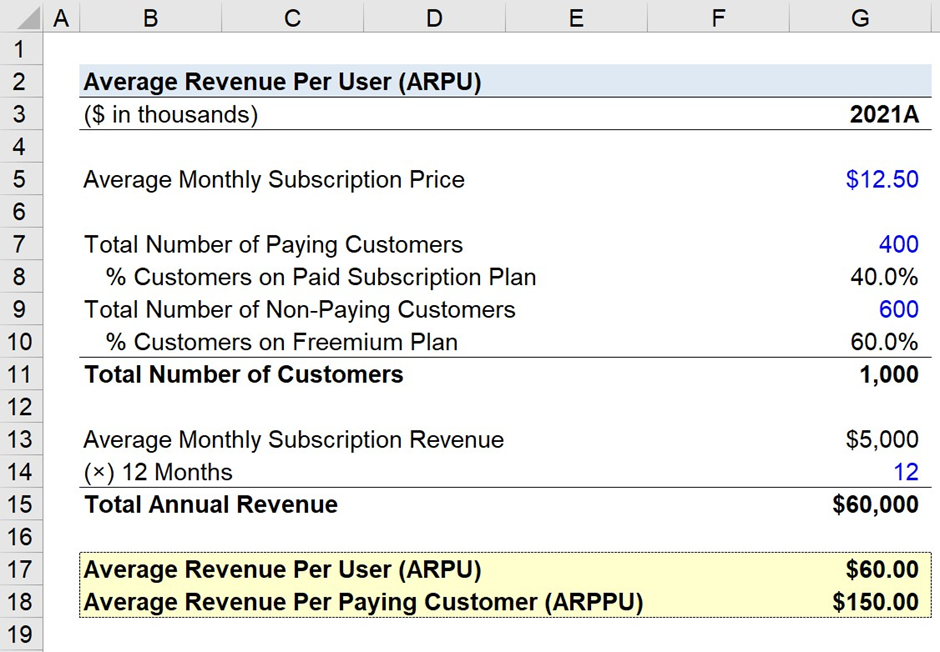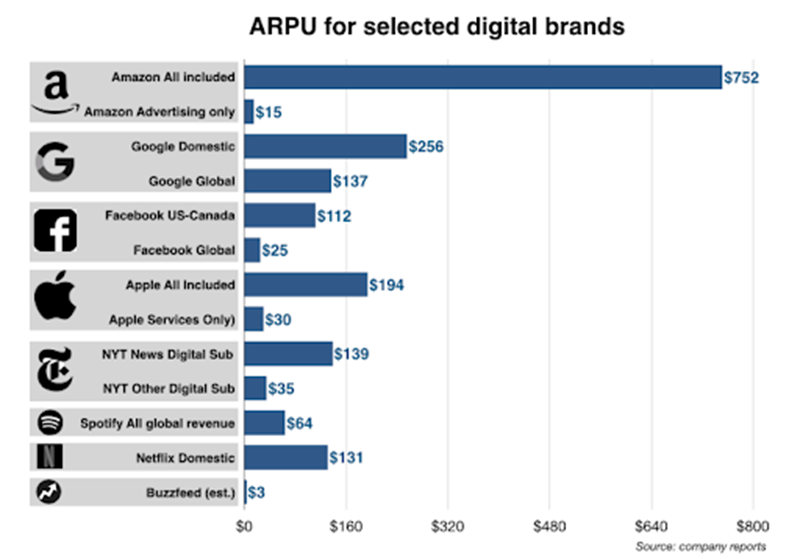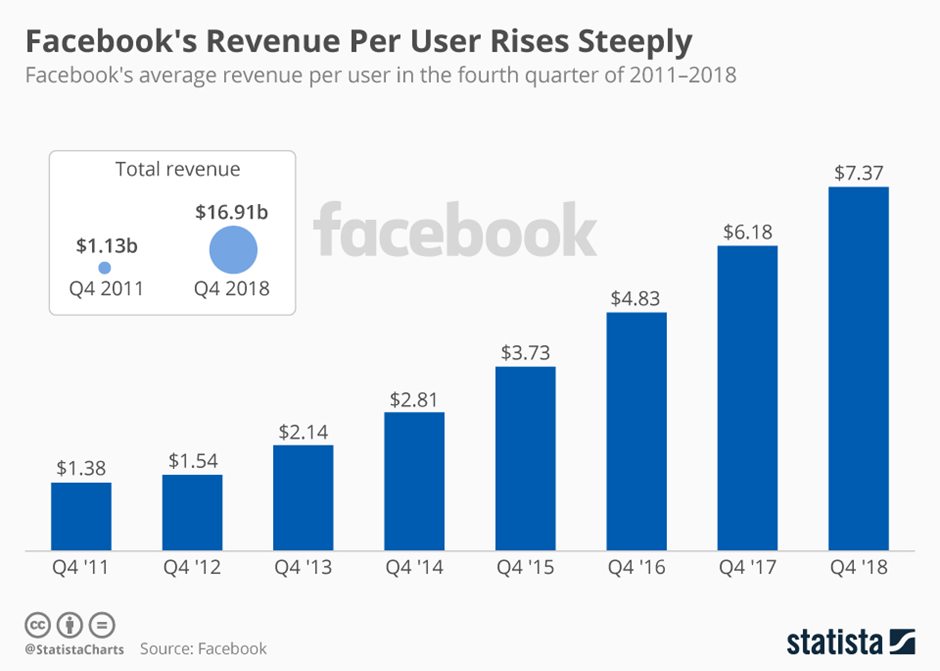One of the most important metrics for any business is average revenue per user (ARPU). This metric tells you how much money each of your customers is spending on your product or service. If you want to increase your profits, you need to find ways to increase your ARPU. This blog post will discuss how to measure and increase your ARPU. We will also provide some tips for increasing customer spending!
What is Average Revenue Per User (ARPU)?
The Average Revenue Per User (ARPU) is a measure of the average revenue that is generated from each individual user utilizing your app. It can be used to evaluate the overall success of a business model or to compare different segments of the customer base. ARPU is a useful metric for businesses to measure the revenue generated from their customer base and to analyze how much money each user is generating for them.
Why Is It Important For Startups To Track This Metric?
ARPU is a key metric for startups as it allows them to measure the success of their business model. ARPU gives startups an indication of how much revenue they are generating per user and provides important insights into customer engagement and retention.
By tracking ARPU, startups can identify areas of improvement in order to increase revenue and ensure long-term sustainability. Additionally, ARPU can help startups better understand their customer base and create more targeted marketing campaigns to increase revenue.
Startups should use ARPU as a key metric for evaluating the success of their business and driving long-term growth. By tracking ARPU, startups can make informed decisions that will lead to increased revenue and profitability.
How do you Calculate Average Revenue Per User (ARPU)?
Here is the formula:
($) Total revenue generated during specific time period / (#) Active users during the same period = ($) Average Revenue Per User
Calculate Average Revenue Per User (ARPU) Calculation example
We need to calculate the Average Revenue Per User (ARPU) for a subscription streaming service company in the fiscal year ending 2021, based on the given product and customer data points.
- Average Monthly Subscription Price = $12.50
- Total Number of Paying Customers = 400k
- Total Number of Non-Paying Customers = 600k
By multiplying the average monthly subscription price by the number of users on the paid subscription tier, we can estimate that our company’s total monthly revenue is $5 million. To calculate Average Revenue per User (ARPU) and Average Revenue Per Paying User (ARPPU) on an annual basis, the next step is to annualize this monthly revenue, which can be done by multiplying it by 12 months.
- Total Annual Revenue = $12.50 × 400k × 12 = $60mm
We can calculate the Average Revenue Per User (ARPU) by dividing the company’s annual revenue by the number of users, including both paying and non-paying customers.
- Average Revenue Per User (ARPU) = $60mm ÷ 1mm = $60.00
Next, we will compute the Average Revenue Per Paying User (ARPPU), including only customers with a paid monthly subscription. To calculate ARPPU, we will divide the annual total revenue by the overall number of paying users, as demonstrated in the equation below.
- Average Revenue Per Paying Customer (ARPPU) = $60mm ÷ 400k = $150.00
We can now compare the two values:
- ARPU = $60.00
- ARPPU = $150.00
The discrepancy between the two metrics amounts to $90.00, suggesting that the company should explore ways of transforming more non-paying users into paying customers. Additionally, the firm should contemplate strategies for generating additional revenue from its current paying user base.

What Factors Affect Average Revenue Per User (ARPU)
ARPU is a key metric for understanding the health of an organization, so it’s important to understand the factors that affect it. ARPU can be impacted by several external and internal forces such as user acquisition costs, customer churn rate, pricing strategies, product portfolio mix, lifecycle marketing efforts, etc. Here are some other factors:
User Acquisition Costs
The cost of acquiring new users can have a significant impact on ARPU, as it indicates how much the company is spending to acquire customers and whether or not those customers are staying with the product long enough to become profitable.
Customer Churn Rate
When users stop using a product or service, it can hurt ARPU. Companies need to track their churn rate and address any underlying issues contributing to it, such as poor customer service or the lack of new features. Here’s what you need to know about churn rate(insert link).
Pricing Strategies
Different pricing strategies can have a large effect on ARPU, depending on whether the company is selling products with higher price points or running a subscription model. It’s important to understand the impact of different pricing strategies on overall revenue and be willing to experiment with different prices at different times in order to maximize customer value.
Product Portfolio Mix
Companies should focus on offering products that their customers want and are able to pay for, as this will result in higher ARPU. Understanding the types of products that customers most desire will help to increase revenue and maximize customer value.
Lifecycle Marketing Efforts
Companies should invest in lifecycle marketing efforts such as cross-selling, upselling, and email campaigns to keep users engaged with their products and services over time, which can result in higher ARPU.
Ultimately, the success of any company’s efforts to increase its Average Revenue Per User depends on understanding the key factors that affect it and taking a holistic approach to improving customer value. By focusing on these five key areas, companies can move towards increasing their ARPU over time.
What are the effects of ARPU on a startup?
The average revenue per user (ARPU) is a metric that startup companies should pay close attention to. ARPU measures the average revenue each user generates for the company. It’s important to track ARPU because it can be a good indicator of how well a company is growing and how much each customer is worth.
If ARPU is increasing, it means that the company is bringing in more revenue from each customer and is growing at a healthy rate. However, if ARPU decreases, it could be a sign that the company is losing customers or that they are not spending as much money with the company. Whether ARPU is increasing or decreasing, it’s important to closely monitor this metric to ensure that the company is on track to achieve its growth goals.
What is a good ARPU?
Average Revenue Per User (ARPU) can vary greatly between different industries, so there is no one-size-fits-all benchmark to strive for. Consumer-based businesses, such as those in telecommunications and mobile services, generally measure ARPU by user. This is often noticeably lower than the ARPU of a SaaS-based subscription service, as shown in the chart from Monday Note.

Comparing yourself to competitors in the same industry is a good strategy to benchmark your ARPU. That’s especially true if you and your competitors are targeting the same market. However, you may need to adjust your ARPU goals if you focus on larger customers while competitors aim for smaller ones.
What are Examples of ARPU?
Defying all the expectations of its critics, Facebook had an impressive finish to the year. Its fourth-quarter earnings report on Wednesday revealed that the company had earned $16.91 billion in revenue, exceeding its previous record by over $3 billion. Despite the various scandals that have plagued the social media giant in the past, its user base has remained consistent, with 2.32 billion monthly active users and 1.52 billion daily users.
The jump in revenue was largely due to the fact that Facebook has been able to generate more money per user. During the past quarter, the global average revenue per user was $7.37, five times higher than in the same period in 2011. However, during an earnings call yesterday, Facebook’s CFO David Wehner cautioned that ad revenue growth could slow down in 2019, as users’ news feeds have already reached their limit in terms of ad load and usage is shifting towards stories, which are not as profitable.

Strategies to increase ARPU
Here are some top tested and tried strategies for you to increase your ARPU:
Offer New Services or Upgrades
Offering new services or upgrades to your existing customers can increase ARPU significantly as they are more likely to pay for an additional service that enhances their current experience.
Introduce Tiered Pricing Models
Tiered pricing models allow you to separate your customers by the amount of service they require. This encourages customers to upgrade their packages and pay more for their needed features.
Implement Subscription Model
A subscription model makes it easy for customers to stay with your service over a longer period and can increase ARPU significantly.
Offer Discounts
Offering discounts on certain products or services can entice customers to upgrade their packages or purchase more of your products.
Cross-Sell and Upsell
Encouraging customers to cross-sell and upsell related services or products is an effective way to increase ARPU as they are likely to pay more for the combination of products or services.
Improve Customer Experience
Improving customer experience by offering better customer service or providing rewards for loyalty can help increase ARPU as customers are more likely to pay more if they feel valued.
Utilize Digital Platforms:
Leveraging digital platforms such as email, social media, and other web-based methods can help you reach more customers and increase ARPU.
Analyze Data:
Analyzing data on customer behaviour, preferences, and spending can help you understand how to better cater to them and increase ARPU.
By implementing these strategies, you can effectively increase your ARPU and maximize your ROI. However, it is important to track the performance of each strategy and make adjustments as needed to ensure success.
Conclusion
By following the steps above, you can measure your ARPU and take steps to increase it. You may not be able to (or want to) implement all of these strategies at once, but even just a couple can have a big impact. And as your business grows, you can continue to refine your process and try new things to keep pushing your ARPU up. Have you tried any of these methods for increasing ARPU? What’s worked well for you?

